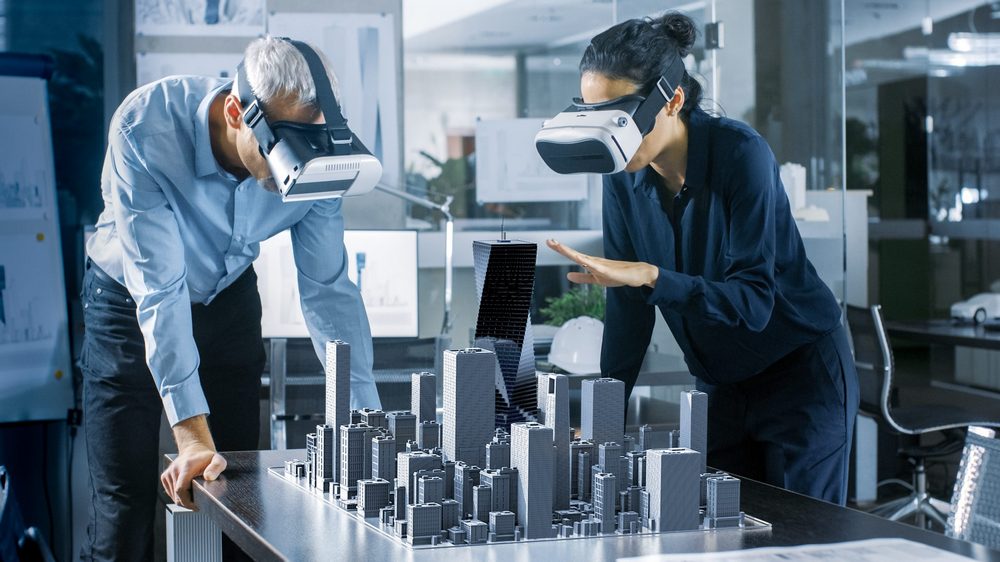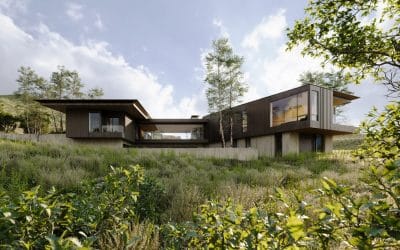
It’s no secret that artificial intelligence (AI) and virtual reality (VR) are rapidly changing how we live our lives. But what you may not know is that these cutting-edge technologies are also revolutionizing the architecture industry. That’s because AI and VR give architects, designers, and construction teams new ways to design, visualize, and experience their projects.
Designing with Data
For starters, AI gives architects access to vast amounts of data that they can use to inform the design process. For example, architects can now use data analytics to study how people interact with buildings and use this information to create more user-friendly designs.
AI can also generate 3D models of buildings and environments, which architects can then use to create realistic simulations of how a space will look and feel, all before building a model of the structure.
Visualizing Projects in Virtual Reality
On the other hand, modern rendering resources give architects a whole new way to visualize their projects. With VR, architects can step inside their designs and experience them in an immersive way.
Doing this is especially useful for complex tasks that are difficult to visualize using traditional methods, such as drawings or 3D models.
In addition, architects can use VR to create interactive presentations that allow clients to explore a design and get a feel for how it will work in the real world. Imagine being able to tour a building before it’s ever built. That’s the magic of AI and VR!
Experiencing Buildings Before They’re Built
Architects can now use VR to take virtual tours of their projects before they’re even built. Doing this allows them to catch errors and make changes early on in the process, saving a lot of time and money.
In addition, architects and designers can use AI to create digital twins of buildings, which are exact replicas of the physical structure. These digital twins can test out different scenarios, such as how a building will respond to an earthquake or what would happen in a flood.
Providing Updates on Progress
Another way AI and VR are changing the architecture industry is by providing architects with real-time updates on the progress of their projects. For example, construction companies are now using drones equipped with AI to track the progress of construction projects.
This data can then generate 3D models that show the project’s current state and identify any areas that need to be improved. Those updates can then be fed back to any designers or architects on the project to ensure that everyone is on the same page.

Increasing Building Security
AI and VR are also being used to increase the security of buildings. Facial recognition technology can identify people who are not authorized to be in a building. AI could also employ voice or fingerprint recognition to secure buildings.
VR, on the other hand, can create virtual security systems that test out different security scenarios and find weak points in a building’s security. Doing this helps architects find and fix any security problems before they become a real issue.
Improving Building Maintenance
One of the most critical ways AI and VR are changing the architecture industry is by improving building maintenance. AI can track the condition of a building and identify any problems that need to be fixed. In addition, VR can create virtual models of buildings that maintenance crews can use to find and fix problems more quickly before traveling to the site.
Reducing Construction Waste
Another way AI and VR are changing the architecture industry is by reducing construction waste. AI can create 3D models of buildings that architects can use to plan construction projects more accurately.
Doing this means that there will be less material waste, and construction crews can complete tasks more quickly. In addition, VR can create virtual simulations of construction projects, which can help identify potential problems and find more efficient ways to build.
Improving Client Relations
AI and VR are also changing the way architects interact with their clients. For example, VR can create virtual reality presentations that allow clients to explore a design and get a feel for how it will work in the real world. This option saves clients travel time and allows them to feel more involved in the process.
Helping Architects Collaborate
AI and VR are also changing the way architects collaborate. For example, VR can create virtual models of buildings that architects from different firms can share. Doing this allows architects to work together on a project without being in the same physical location. Doing this dramatically reduces the amount of time and money wasted on travel.
Reducing Environmental Impact
One of the most critical ways AI and VR are changing the architecture industry is by reducing the environmental impact of buildings. For example, AI can create 3D models of structures to help plan construction projects more accurately.
Doing this means that there will be less material waste. In addition, less environmental impact means that there will be less pollution and a smaller carbon footprint for buildings, thus improving the surrounding environment.
Optimize Marketing Efforts
Finally, AI and VR are changing the way architects market their services. For example, VR can create virtual reality presentations for potential clients.
Then, once these designs are completed, architects can show them to prospective clients. These designs help give potential clients a better understanding of what they’re getting, and it helps to close more sales.
Wrapping Up
As you can see, artificial intelligence and virtual reality are changing the architecture industry in several ways. From reducing construction waste to improving client relations, these technologies significantly impact the way architects do business.
In the future, we can expect to see even more changes as these technologies continue to evolve. By doing so, AI and VR will help to make the architecture industry more efficient, more sustainable, and more successful.








